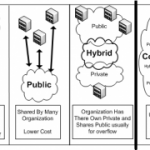How many people does it take to change a traffic light bulb?
Was the tagline to this photo when it appeared in a UK newspaper.
Images like this confirm many of our views about the efficiency of government workforces but it’s not just government that struggles with poor productivity and the root cause is the same whether it’s a government or industrial workforce…
Whilst the image here is an extreme example the questions you should ask are “how long should a job take?”, “how many people do we need to complete it?” and “does the work you have planned for your team today add up to a solid 8 hours for each person?”
How do you know?
If you can’t answer these questions then there is a good chance that there are many occasions when you are paying seven people to change a lightbulb and in the process letting bottom line dollars (or pounds) slip away…
“But we have a detailed project plan/schedule, that includes resourced work packages”, you say…
Every major project does, but if you look inside the bars on your gantt chart what do you see? Widely varying demand for effort from day to day and often widely varying availability of people and equipment. The combination of these two factors results in waste that directly results in either extra time being added to the planned schedule or slippage in the actual schedule.

Both scenarios cost you money.
How much more productive could your workforce be if the plans your “planners” and managers sent out to the workforce each day were properly resource balanced and able to be managed at the task level?
Major industrial clients of ours report improvements of between 25% and 39% in production and productivity for no capital cost.
They think Fewzion is a no brainer, perhaps you should too?




